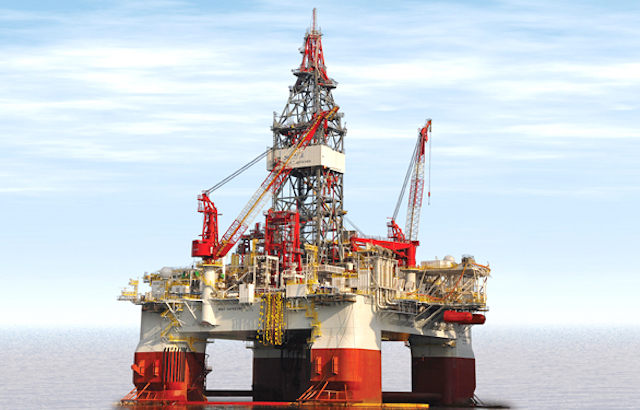Attendance at last week's National Ocean Industries Association annual meeting in Washington, D.C., has picked up since the depths of the industry downturn and the mood at this year's gathering was more upbeat.
The extent of the downturn has taken its toll, however, as Nikki Martin, president of the International Association of Geophysical Contractors pointed out. She said her members have now been dealing with the downturn for over six years.
The expense of offshore exploration and development, coupled with the short cycle times for the prolific shale formations, has drawn away much of the offshore energy industry’s capital. The challenge facing offshore geophysical companies was captured in a conversation with Richard Williams, global director, construction for Fugro, a Dutch-based surveying services company. Last year his fleet of survey, subsea and geotechnical vessels worked more days off the East Coast conducting site survey work for offshore wind farms than it did collecting data for oil and gas companies in the Gulf of Mexico.
How do we know that things are improving offshore? Virtually every drilling contractor, vessel operator and equipment and service executive commented to us that activity was up slightly. More importantly, their clients are more optimistic due to offshore cost improvements and higher oil prices. The main driver, however, is lower offshore costs.
Pointing to lower costs offshore, Richard Clark, president of Deep Gulf Energy Companies, a Houston-based exploration and production company focused in the deepwater Gulf, cited statistics from Wood Mackenzie showing a 20% reduction in offshore drilling and completion costs. But he went on to cite his own company’s figures to show a much greater cost reduction for small fields in deepwater. Based on his examination of the cost to drill and complete a well in deepwater four years ago with now, his company saw a 65% reduction.
Clark said that when Deep Gulf used current drilling and completion costs and added in their current lifting costs and G&A expense (full cycle), new fields have an estimated cost of about $30 bbl. At that cost, current profit margins are 70%.
A question not answered was how much of the cost reduction was attributable to lower rig day rates and other service company price reductions? The answer is a lot. This was implied in Clark’s comment that Wall Street’s ignoring of the improving energy industry economics is their questioning of whether this improvement is repeatable.
Two favorable developments were evident by the presentations from government officials involved in regulating the offshore energy industry: First, regulation is being reduced, and it is being done with an eye on ensuring thqt the changes are legally defensible against anticipated attacks. Secondly, Interior Department officials were pleased with the response in the last offshore sale to reduced royalties for shallow water leases. They are now considering further royalty relief to help spur the industry’s recovery.
The partnership between government and industry, clearly evident at NOIA last week, signals that the nascent offshore recovery will continue, and it will gain strength, barring an oil price collapse.




